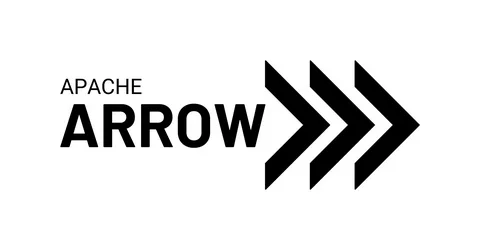In the ever-evolving world of data analytics, efficiently processing large volumes of data is a top priority. Traditional data structures often fail to handle vast datasets with speed and flexibility. Enter Apache Arrow, an open-source, columnar memory format revolutionising data analytics. Apache Arrow enhances performance and interoperability, unlike conventional row-based storage, making it indispensable for modern data-driven applications. For those looking to master cutting-edge data technologies, a Data Science Course in Hyderabad provides in-depth insights into Apache Arrow and its capabilities.
What is Apache Arrow?
Apache Arrow is a cross-language development platform designed to optimise in-memory data processing. It enables seamless data sharing across different computing environments without serialisation or deserialisation. With a focus on zero-copy reads and a standardised columnar format, Apache Arrow significantly reduces memory overhead, making it a game-changer for big data analytics. Learning about its impact through a Data Science Course in Hyderabad can equip professionals with the skills needed to harness its full potential.
Why Apache Arrow Matters in Data Analytics?
Data analytics relies heavily on efficient data handling, and Apache Arrow addresses multiple pain points associated with traditional data formats. It supports high-performance computing by leveraging SIMD (Single Instruction, Multiple Data) operations, ensuring faster computations. By taking a course, students can explore real-world applications where Apache Arrow accelerates data pipelines, making analytical workloads more efficient.
Key Features of Apache Arrow
One of Apache Arrow’s standout features is its columnar memory format, which optimises storage and processing speeds. Unlike row-based data structures, Arrow’s approach allows vectorised operations, leading to substantial performance improvements. It also integrates seamlessly with popular data processing frameworks like Pandas, Spark, and Dask. For professionals eager to master these integrations, a course offers hands-on training to maximise the use of Apache Arrow.
Apache Arrow’s Role in Big Data Processing
With the exponential growth of big data, businesses need scalable solutions for real-time analytics. Apache Arrow supports parallel processing, making it an ideal choice for large-scale data operations. It also enhances data interoperability, enabling smooth transitions between different analytical tools. Enrolling in a Data Scientist Course provides a comprehensive understanding of how Apache Arrow powers big data frameworks like Apache Parquet and Apache Drill.
Enhancing Data Interoperability with Apache Arrow
One of the major challenges in data analytics is interoperability between various programming languages and tools. Apache Arrow eliminates these barriers by providing a shared memory format across different environments. Whether working with Python, R, or Java, data scientists can leverage Arrow’s unified structure for seamless data exchange. Through a Data Scientist Course, professionals can gain practical knowledge of using Apache Arrow to bridge interoperability gaps effectively.
Apache Arrow and Machine Learning
Machine learning models require extensive preprocessing and transformation of large datasets. Apache Arrow speeds up this process by enabling efficient data handling and reducing I/O bottlenecks. Its ability to integrate with libraries like TensorFlow and PyTorch makes it a valuable asset in AI-driven analytics. Enrolling in a Data Scientist Course allows learners to explore how Apache Arrow enhances machine learning workflows, leading to faster model training and deployment.
Real-Time Data Analytics with Apache Arrow
Apache Arrow delivers unparalleled performance in industries where real-time data processing is critical, such as finance and healthcare. Its memory-efficient format ensures rapid data access and computation, making real-time analytics more feasible. Understanding these capabilities through a course helps data professionals implement Apache Arrow effectively in time-sensitive applications.
Apache Arrow vs. Other Columnar Formats
While Apache Arrow shares similarities with other columnar formats like Apache Parquet and ORC, its primary advantage lies in its in-memory processing capability. Unlike Parquet, which is optimised for disk storage, Arrow is designed for high-speed data exchange within applications. A detailed comparison of these technologies is integral to a course, helping students choose the best tools for their analytical needs.
Future of Apache Arrow in Data Science
Apache Arrow continues to evolve, with growing adoption across industries. Its contributions to cloud computing, distributed databases, and real-time analytics make it a cornerstone of modern data science. Staying updated with the latest advancements in Apache Arrow is crucial for data professionals. Enrolling in a Data Scientist Course ensures learners remain at the forefront of emerging data technologies.
Conclusion
Apache Arrow transforms the data analytics landscape with its high-performance, columnar memory format. It enhances computational efficiency, ensures seamless interoperability, and accelerates machine-learning workflows. For those eager to master cutting-edge data processing technologies, a Data Scientist Course offers the perfect platform to gain expertise in Apache Arrow and its real-world applications. By leveraging Apache Arrow, data professionals can unlock new possibilities in analytics and drive innovation in the field.
ExcelR – Data Science, Data Analytics and Business Analyst Course Training in Hyderabad
Address: Cyber Towers, PHASE-2, 5th Floor, Quadrant-2, HITEC City, Hyderabad, Telangana 500081
Phone: 096321 56744

